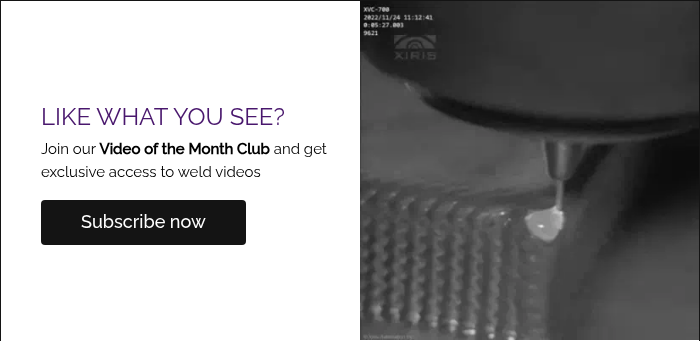What is Plasma Arc Welding? Plasma Arc Welding (PAW) is an arc welding process similar to Gas Tungsten Arc Welding (GTAW). The electric arc is formed between a non-consumable electrode (which is usually but not always made of sintered tungsten) and the work piece.
The key difference between Plasma Arc Welding (PAW) and Gas Tungsten Arc Welding (GTAW) is that in PAW the electrode is positioned within the body of the torch, allowing the plasma arc to be separated from the shielding gas envelope.
The plasma is then forced through a fine-bore copper nozzle, which constricts the arc, and the plasma exits the orifice at high velocities (approaching the speed of sound) and a temperature approaching 20,000 °C.
Plasma Arc Welding can be used to join all metals that can be welded with GTAW (i.e., most commercial metals and alloys), but PAW has a greater energy concentration than GTAW and therefore allows for deeper penetration and deposition rates.

(courtesy www.substech.com)
How Weld Cameras Can Improve Plasma Arc Welding
Weld Cameras allow Plasma Arc Welding to be monitored remotely, providing several key benefits. Operators can:
- View through the plasma arc to see the weld seam for verifying alignment.
- Monitor the shape of the keyhole in the center of the weld.
- Ensure the correct flow of molten material around the keyhole out of the heat-affected zone into the weld pool.
- Ensure that variations in fit-up of work pieces and weld head are minimized.
- Get a good view of the plasma weld cone to ensure it is properly aligned with the pieces it is welding.
- Confirm that the weld seam and pool are properly aligned and formed during the welding process.
To gain these advantages, the Weld Camera needs to be industrially hardened and have High Dynamic Range imaging capability in order to get high-quality, detailed images despite the extreme range in brightness between the plasma arc and the dark weld background.
Implementation Considerations
- The intensity of the weld arc is a function of the weld power supply current—as the current increases, so does the intensity of the weld arc.
- A small Field of View is required to properly image the welding detail, as a plasma arc head is quite small.
- PAW uses a Pilot Arc source when the welding process is not running that provides enough light to illuminate the local welding area for monitoring the welding work pieces and aiding in set-up of the weld process.
 Plasma Welding with Gas from Top
Plasma Welding with Gas from Top
More videos and sources are available at our Welding Video Library!







